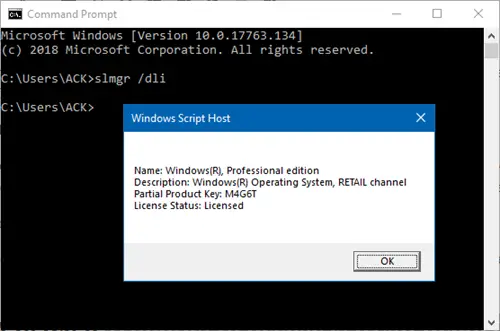Generate A New Api Key For The Authenticated User Post
Mar 05, 2019 Create a new API Key for Google Translate. After activating the API, let’s see how to generate a new Key API to be able to use this service. We have to go to the side menu again and select the Credentials option. With API key auth, you send a key-value pair to the API either in the request headers or query parameters. In the request Authorization tab, select API Key from the Type list. Enter your key name and value, and select either Header or Query Params from the Add to dropdown. You can store your values in variables for additional security.
- Generate A New Api Key For The Authenticated User Post Number
- Generate A New Api Key For The Authenticated User Post Free
- Generate A New Api Key For The Authenticated User Poster
When your application requests private data, the request must be authorized by an authenticated user who has access to that data.
When your application requests public data, the request doesn't need to be authorized, but does need to be accompanied by an identifier, such as an API key.
Every request your application sends to the Google Sheets API needs to identify your application to Google. There are two ways to identify your application: using an OAuth 2.0 token (which also authorizes the request) and/or using the application's API key. Here's how to determine which of those options to use:
- If the request requires authorization (such as a request for an individual's private data), then the application must provide an OAuth 2.0 token with the request. The application may also provide the API key, but it doesn't have to.
- If the request doesn't require authorization (such as a request for public data), then the application must provide either the API key or an OAuth 2.0 token, or both—whatever option is most convenient for you.
About authorization protocols
Your application must use OAuth 2.0 to authorize requests. No other authorization protocols are supported. If your application uses Google Sign-In, some aspects of authorization are handled for you.
Authorizing requests with OAuth 2.0
Requests to the Google Sheets API for non-public user data must be authorized by an authenticated user.
The details of the authorization process, or 'flow,' for OAuth 2.0 vary somewhat depending on what kind of application you're writing. The following general process applies to all application types:
- When you create your application, you register it using the Google API Console. Google then provides information you'll need later, such as a client ID and a client secret.
- Activate the Google Sheets API in the Google API Console. (If the API isn't listed in the API Console, then skip this step.)
- When your application needs access to user data, it asks Google for a particular scope of access.
- Google displays a consent screen to the user, asking them to authorize your application to request some of their data.
- If the user approves, then Google gives your application a short-lived access token.
- Your application requests user data, attaching the access token to the request.
- If Google determines that your request and the token are valid, it returns the requested data.
Some flows include additional steps, such as using refresh tokens to acquire new access tokens. For detailed information about flows for various types of applications, see Google's OAuth 2.0 documentation.
Here's the OAuth 2.0 scope information for the Google Sheets API:
| Scope | Meaning |
|---|---|
https://www.googleapis.com/auth/spreadsheets.readonly | Allows read-only access to the user's sheets and their properties. |
https://www.googleapis.com/auth/spreadsheets | Allows read/write access to the user's sheets and their properties. |
https://www.googleapis.com/auth/drive.readonly | Allows read-only access to the user's file metadata and file content. |
https://www.googleapis.com/auth/drive.file | Per-file access to files created or opened by the app. |
https://www.googleapis.com/auth/drive | Full, permissive scope to access all of a user's files. Request this scope only when it is strictly necessary. |

To request access using OAuth 2.0, your application needs the scope information, as well asinformation that Google supplies when you register your application (such as the client ID and theclient secret).
Generate A New Api Key For The Authenticated User Post Number
Acquiring and using an API key
Requests to the Google Sheets API for public data must be accompanied by an identifier, which can be an API key or an access token.
To acquire an API key:
- Open the Credentials page in the API Console.
- This API supports two types of credentials. Create whichever credentials are appropriate for your project:
OAuth 2.0: Whenever your application requests private user data, it must send an OAuth 2.0 token along with the request. Your application first sends a client ID and, possibly, a client secret to obtain a token. You can generate OAuth 2.0 credentials for web applications, service accounts, or installed applications.
For more information, see the OAuth 2.0 documentation.
API keys: A request that does not provide an OAuth 2.0 token must send an API key. The key identifies your project and provides API access, quota, and reports.
The API supports several types of restrictions on API keys. If the API key that you need doesn't already exist, then create an API key in the Console by clicking Create credentials > API key. You can restrict the key before using it in production by clicking Restrict key and selecting one of the Restrictions.
To keep your API keys secure, follow the best practices forsecurely using API keys.
Generate A New Api Key For The Authenticated User Post Free
After you have an API key, your application can append the query parameterkey=yourAPIKey to all request URLs.
Generate A New Api Key For The Authenticated User Poster
The API key is safe for embedding in URLs; it doesn't need any encoding.
